Suddenly got stuck, what did I learn? Let me ask you, what is the maximum input conversion range of an ADC? (You can answer that in your mind, I can’t hear you), suddenly I was lost, what is it? This is the problem that this short article addresses.The ADC converts the input analog signal into a digital value by comparing it with a reference voltage.If the reference voltage is 3.3V, the typical input range of the ADC is 0~3.3V (unipolar) or -1.65V~+1.65V (bipolar, requiring a negative reference voltage). In other words, the value from the reference to ground potential is the range that can be processed.Furthermore, the resolution of our ADC (such as 12-bit, 16-bit) is based on the reference voltage. For example, the minimum resolvable voltage of a 12-bit ADC is VREF / 4096. This means that the final converted voltage is essentially how many parts of the resolvable voltage above it.Next, let’s look at some ADC reference ranges: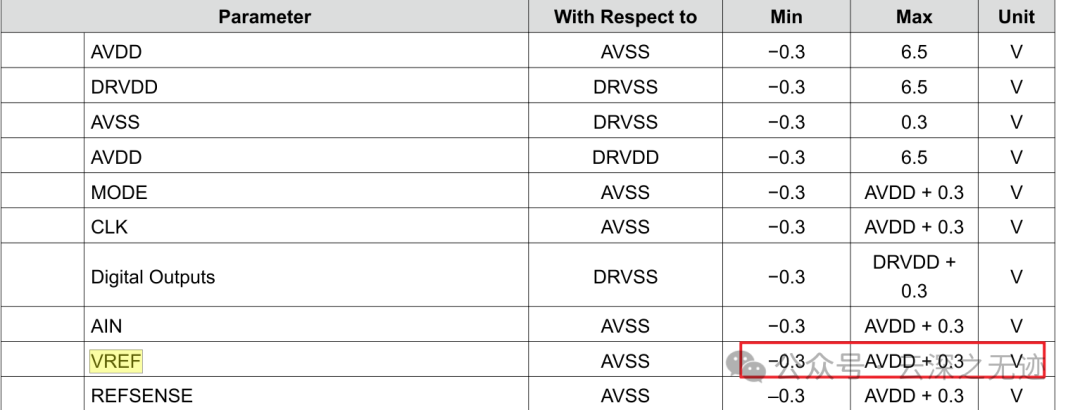 This is yesterday’s ADC, from 3PEAK.
This is yesterday’s ADC, from 3PEAK.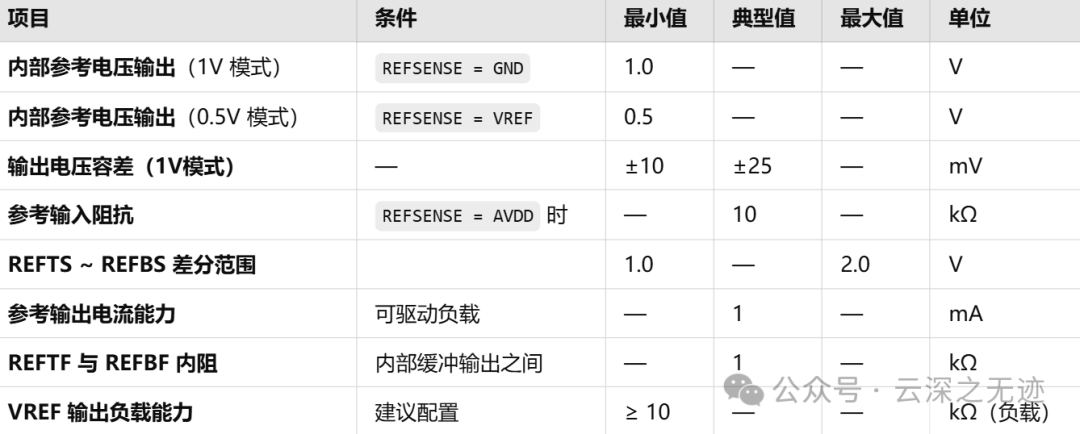 The provided parameters are quite comprehensive.
The provided parameters are quite comprehensive. It can’t be said that it’s completely incomprehensible; generally, our usage is quite rough.Let me also provide the role of the parameters:
It can’t be said that it’s completely incomprehensible; generally, our usage is quite rough.Let me also provide the role of the parameters: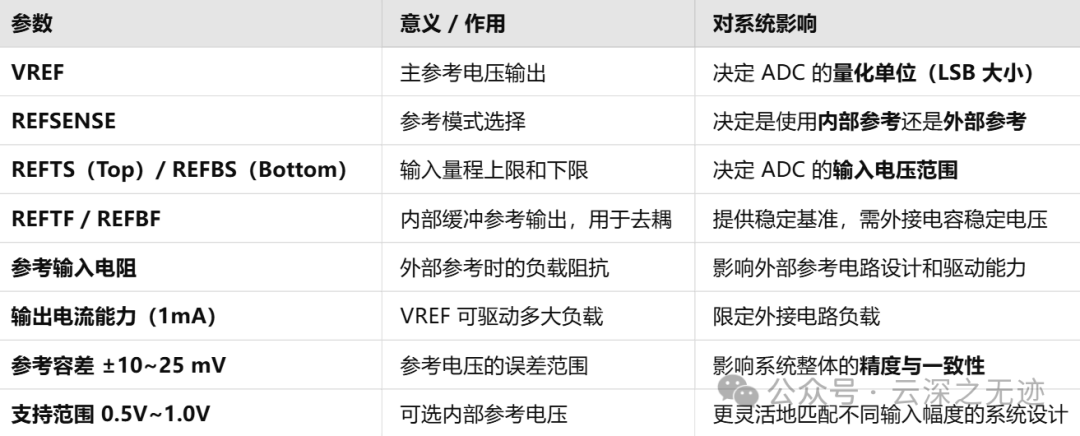 Alright, let’s pretend to understand.
Alright, let’s pretend to understand.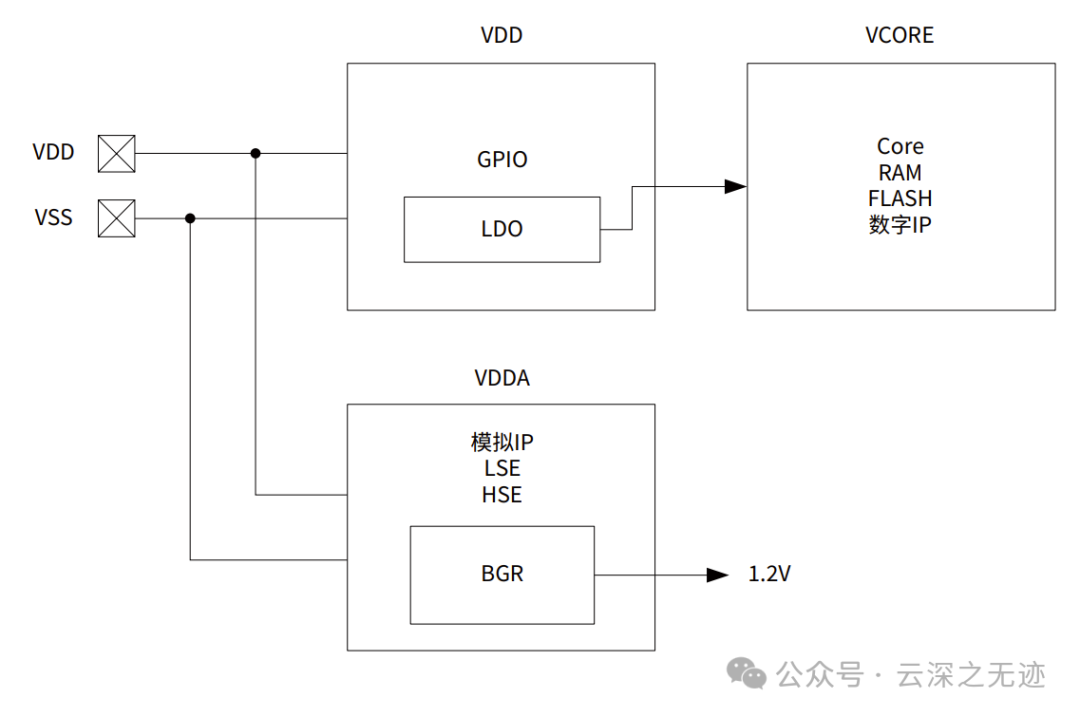 Our old acquaintance, CW32, references from the internal power supply.
Our old acquaintance, CW32, references from the internal power supply.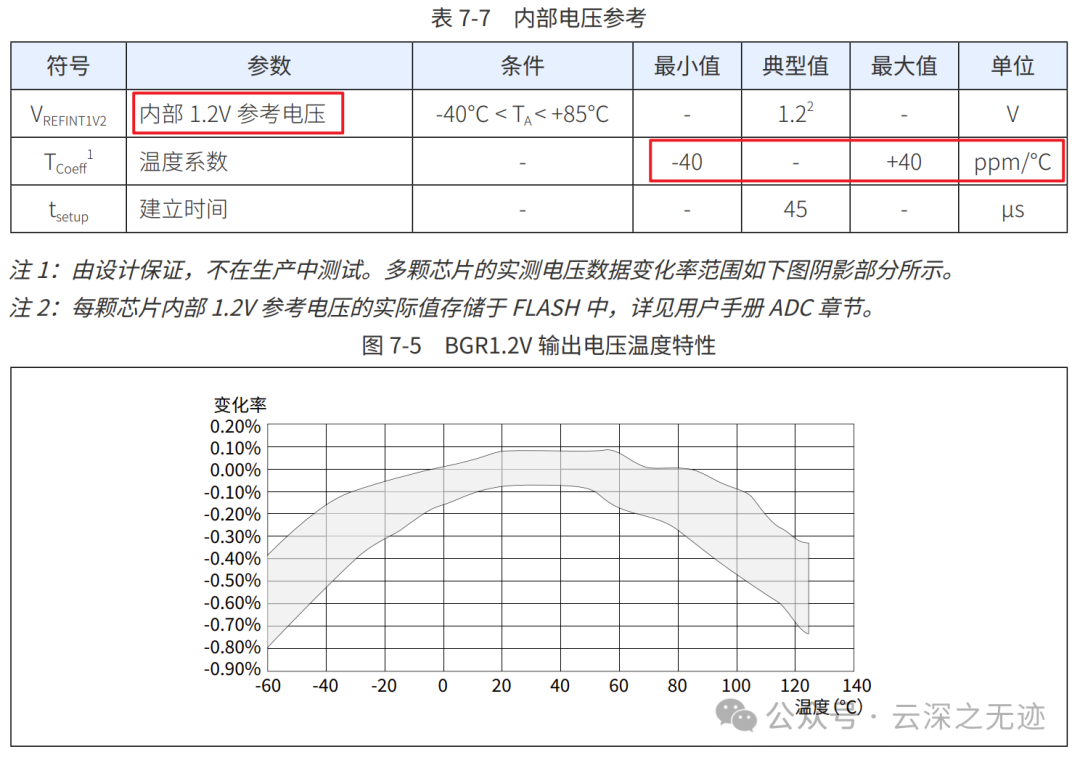 Only 1.2V, and it also shows a temperature-related relationship.Now let’s take a look at STM32:
Only 1.2V, and it also shows a temperature-related relationship.Now let’s take a look at STM32: It is written like this:
It is written like this: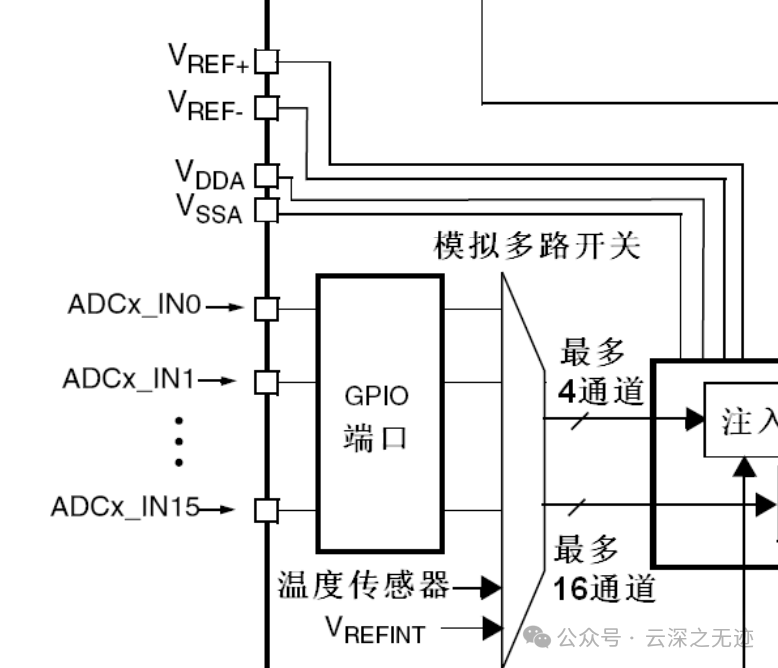 The block diagram is still quite understandable.
The block diagram is still quite understandable. These two pins determine the measurement range of the ADC:
These two pins determine the measurement range of the ADC:
- ADC measurement range = VREF- (lower limit) ~ VREF+ (upper limit)
- Under normal circumstances: VREF- = VSSA (ground), VREF+ = VDDA (3.3V)
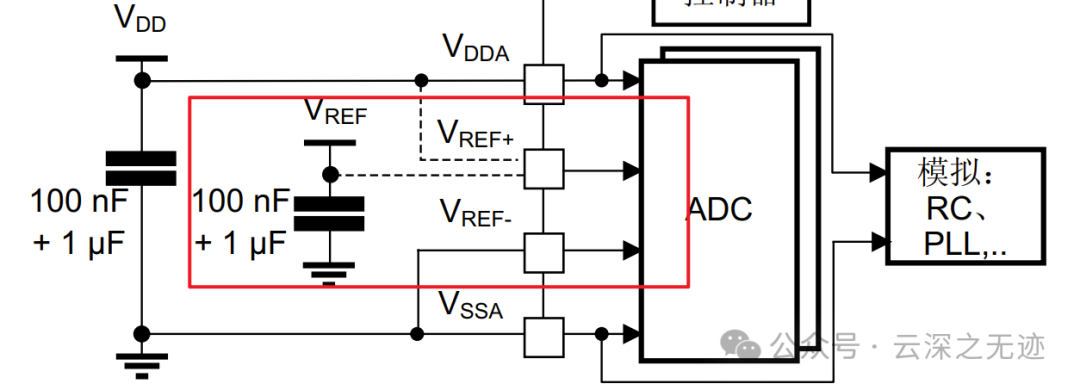 This is the internal reference of F4.
This is the internal reference of F4.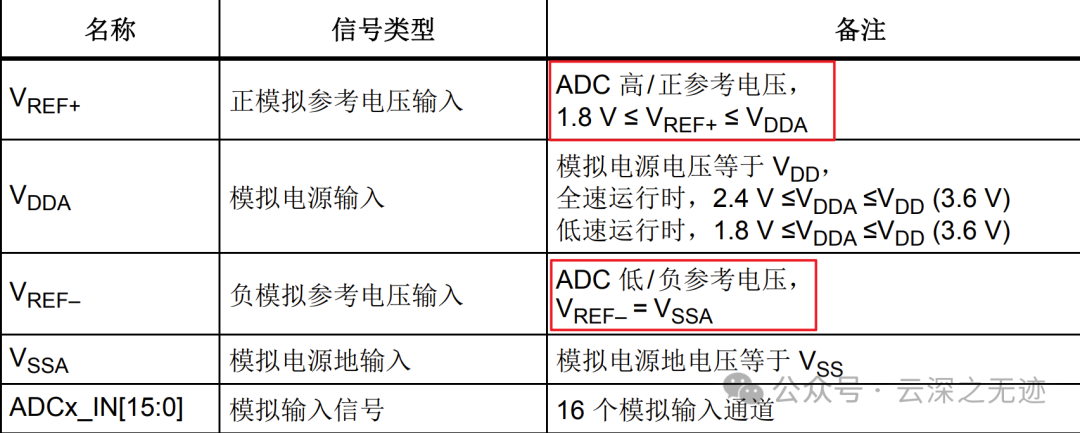 It must be greater than 1.8V, but below the supply voltage.
It must be greater than 1.8V, but below the supply voltage.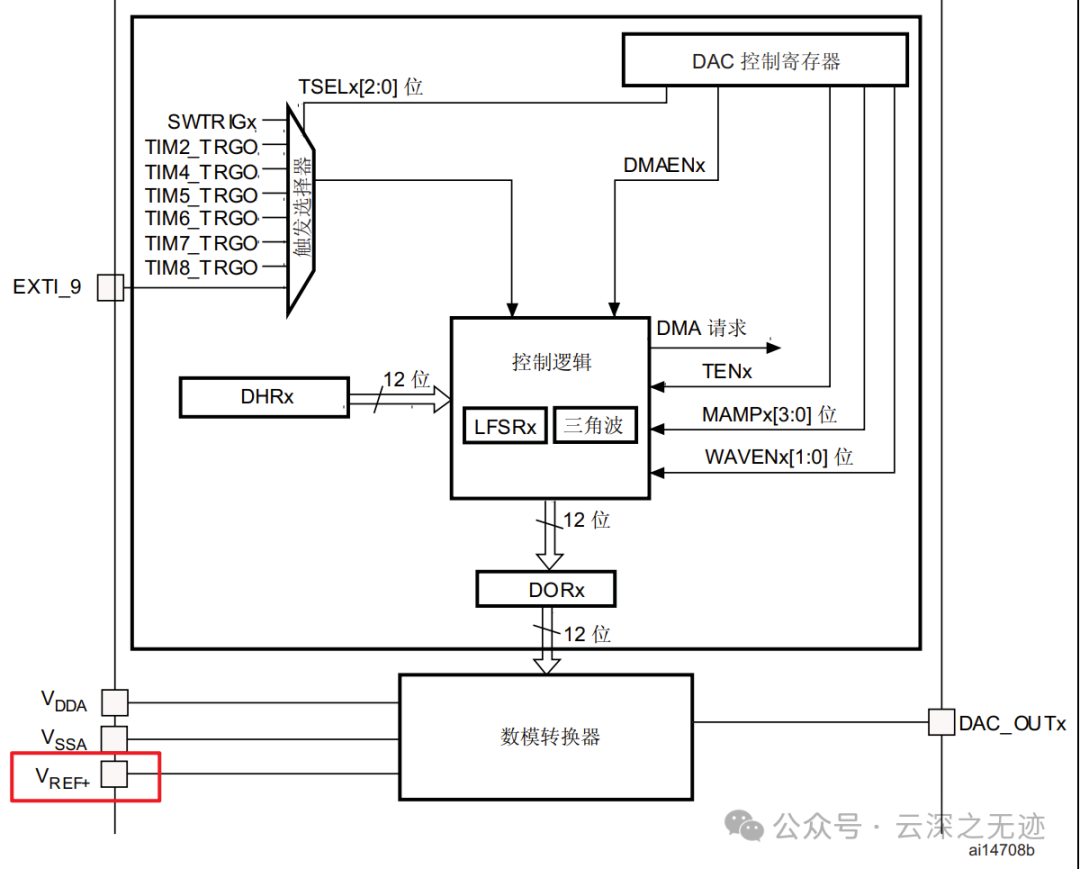 There is also a reference in the DAC.
There is also a reference in the DAC. What is V? I don’t know.
What is V? I don’t know. Now let’s look at the AD7771.
Now let’s look at the AD7771.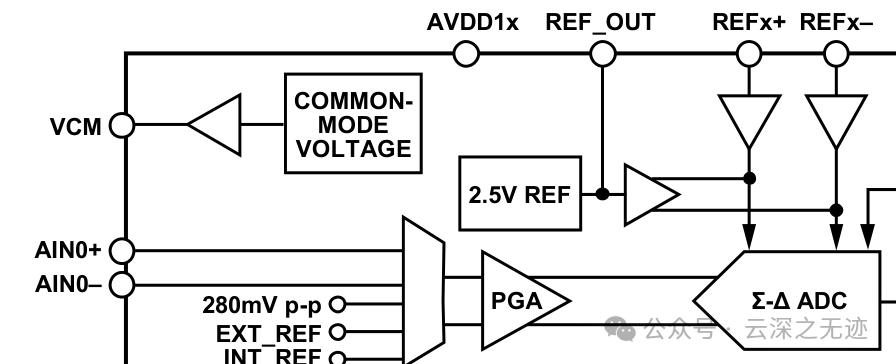 These ADCs have true differential inputs, so this reference is also dual.AD7771 is a true differential input architecture, and the analog input range is related to the reference voltage:
These ADCs have true differential inputs, so this reference is also dual.AD7771 is a true differential input architecture, and the analog input range is related to the reference voltage: When PGA ≠ 1, the input range is reduced, effectively increasing sensitivity:
When PGA ≠ 1, the input range is reduced, effectively increasing sensitivity: VREF = 2.5V, PGA = 4, full-scale input = ±0.625V.
VREF = 2.5V, PGA = 4, full-scale input = ±0.625V. Very low, and also very delicate.Effective resolution can be derived from RMS Noise, assuming reference voltage VREF = 2.5V, PGA = 1, input range ±2.5V:
Very low, and also very delicate.Effective resolution can be derived from RMS Noise, assuming reference voltage VREF = 2.5V, PGA = 1, input range ±2.5V: The multiplication by 2 is because the differential input has both positive and negative swings.
The multiplication by 2 is because the differential input has both positive and negative swings. Calculation is complete.This learning is becoming more and more detailed.
Calculation is complete.This learning is becoming more and more detailed.